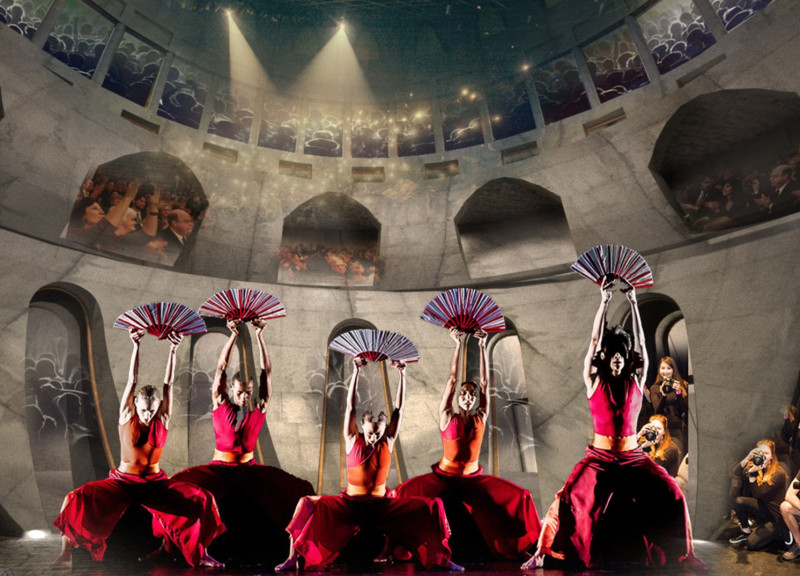5 key facts about this project
The design aims to create an active cultural center in Riga, Eastern Europe, that supports social interaction and cultural expression. The main idea is to encourage engagement, developing a flexible space for various community activities. The design brings together different spatial forms, allowing them to interact and create diverse experiences while remaining part of a single cohesive unit.
Design Concept
The concept focuses on creating spaces that invite discovery and participation. It reflects the lively character of urban life in Riga. Vertical elements such as columns and obelisks shape the structure's appearance and function. These features serve practical purposes, and they also add an aesthetic element while paying tribute to historical aspects of the city.
Layout and Spatial Arrangement
The plans set out a clear layout for gallery spaces, an auditorium, and service areas. This organization allows people to move freely throughout the building. The arrangement prioritizes accessibility and interaction, accommodating a range of community activities. Flexible spaces on both the ground and upper levels ensure that the design can meet different needs. Whether hosting performances or craft markets, the space can adapt easily.
Sustainability Features
Sustainability is a key focus of the design. It includes features like heat recovery ventilation and carefully placed windows to maximize natural light. These aspects improve the comfort and health of the users. The design also promotes public transport use by limiting parking spaces. Additionally, landscaping includes native plant species to support local biodiversity, which aligns with contemporary environmental goals.
Design Details
The sections of the building show a cross-shaped layout that uses vertical space effectively, allowing natural light to fill the interiors. The structure invites exploration and movement, giving each visitor a unique experience. By blending historical references with modern needs, the design addresses the requirements of today's community while honoring the rich cultural background of Riga.


























